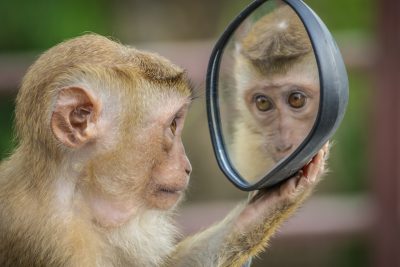Self and Culture
At the foundation of all human behavior is the self—our sense of personal identity and of who we are as individuals. Because an understanding of the self is so important, it has been studied for many years by psychologists (James, 1890; Mead, 1934) and is still one of the most important and most researched topics in psychology (Dweck & Grant, 2008; Taylor & Sherman, 2008).
Identity
Identity refers to the way individuals understand themselves as part of a social group. It is a universal construct and depends on how we view ourselves and how we are recognized by others. Identity may be acquired indirectly from parents, peers, and other community members or more directly through enculturation. A person may hold multiple identities such as teacher, father, or friend. Each position has its own meanings and expectations that are internalized as identity. In this way, the specific content of any individual’s or group’s identity is culturally determined. Also, forming a connection with your identity is influenced by your culture. For example, in the United States it is common to link identity with a particular ethnic or racial group (e.g., Hispanic, African American, Asian American, and Jewish American among others) but we should remember that these categories are products of immigration and history. The history is unique to the United States so individuals from other cultures do not identify with the same cultural groups (Matsumoto & Luang, 2013).
We should also think of identity as dynamic and fluid. It can change depending on the context and the culture. Think about it – when someone asks you where you are from, if you are in a foreign country you might say the United States. In a different situation you might say that you are from California even though you were actually born in Kansas and in a very small state like Hawaii you might identify by your high school (Matsumoto & Luang, 2013).
Our personal identity is the way that we understand ourselves and is closely related to our concept of self. Social identity reflects our understanding that we are part of social groups. Our sense of self is linked to how we see the world around us and how we see our relationships.
Self
Some nonhuman animals, including chimpanzees, orangutans, and perhaps dolphins, have at least a primitive sense of self (Boysen & Himes, 1999). We know this because of some interesting experiments that have been done with animals. In one study (Gallup, 1970), researchers painted a red dot on the forehead of anesthetized chimpanzees and then placed the animals in a cage with a mirror. When the chimps woke up and looked in the mirror, they touched the dot on their faces, not the dot on the faces in the mirror. This action suggests that the chimps understood that they were looking at themselves and not at other animals, and thus we can assume that they are able to realize that they exist as individuals. Most other animals, including dogs, cats, and monkeys, never realize that it is themselves they see in a mirror.

Infants who have similar red dots painted on their foreheads recognize themselves in a mirror in the same way that chimps do, and they do this by about 18 months of age (Asendorpf, Warkentin, & Baudonnière, 1996; Povinelli, Landau, & Perilloux, 1996). The child’s knowledge about the self continues to develop as the child grows. By two years of age, the infant becomes aware of his or her gender as a boy or a girl. At age four, the child’s self-descriptions are likely to be based on physical features, such as hair color, and by about age six, the child is able to understand basic emotions and the concepts of traits, being able to make statements such as “I am a nice person” (Harter, 1998).
By the time children are in grade school, they have learned that they are unique individuals, and they can think about and analyze their own behavior. They also begin to show awareness of the social situation—they understand that other people are looking at and judging them the same way that they are looking at and judging others (Doherty, 2009).


